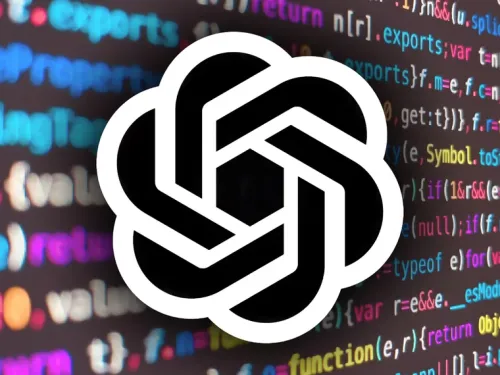
OpenAI launches GPT-4.1 models with revolutionary focus on programming and extensive context
OpenAI has just announced a new family of artificial intelligence models that promise to redefine standards for software development tools. The GPT-4.1, GPT-4.1 mini, and GPT-4.1 nano models bring significant advancements in contextual understanding, code generation, and following complex instructions, with a context window of up to 1 million tokens—equivalent to approximately 750,000 words. Available exclusively via API, these innovations respond to the growing demand for systems capable of acting as "autonomous software engineers," handling everything from frontend to technical documentation with unprecedented precision.
Technical architecture and available models
The GPT-4.1 ecosystem
The new family includes three variations designed for different use cases. The standard GPT-4.1 offers maximum processing power for complex software engineering tasks, while the GPT-4.1 mini balances cost and performance for continuous workflows. The GPT-4.1 nano, in turn, emerges as the fastest and most affordable option, ideal for applications requiring low latency and real-time processing.
The table below details the technical specifications:
| Model | Context Tokens | Price (input/output per million) | Ideal use cases |
|---|---|---|---|
| GPT-4.1 | 1,000,000 | $2 / $8 | Complex agent systems, code refactoring |
| GPT-4.1 mini | 1,000,000 | $0.40 / $1.60 | Continuous integration, data analysis |
| GPT-4.1 nano | 1,000,000 | $0.10 / $0.40 | Autocomplete, classification, microservices |
Enhanced multimodal capabilities
Unlike previous versions, the new models process text, images, and audio simultaneously, enabling scenarios such as:
- Code generation from visual sketches of interfaces
- Analysis of system architecture diagrams
- Transcription and summarization of technical meetings.
This multimodality is particularly effective in technical documentation tasks, where the model can correlate interface screenshots with implementation instructions.
Revolution in software engineering
Performance in coding benchmarks
In standardized tests, the GPT-4.1 demonstrated quantifiable advances:
- 54.6% success in SWE-bench Verified (a validated set of real software engineering problems), surpassing GPT-4o by 21.4%
- 80% preference in blind comparisons with human developers for frontend implementations
- 72% accuracy in Video-MME for understanding long videos without subtitles.
Despite these impressive numbers, the model still presents challenges in extremely long contexts—the accuracy drops from 84% to 50% when the number of input tokens exceeds 1,024.
Practical use cases
A concrete example involves creating a complete web application for flashcards in React. The model generates not only the functional code, but also:
- 3D CSS animations to flip the cards
- Keyboard navigation system
- Dynamic learning statistics graphs
- Instant search in the collection.
In comparative tests, GPT-4.1 implementations required 30% fewer human revisions than previous versions, with a reduction from 9% to 2% in superfluous code edits.
Integration with existing workflows
API and development tools
OpenAI has made detailed documentation available for integration via REST API, including:
- Parameters for controlling output formats (diffs vs. full files)
- Pre-configured models for generating technical documentation
- Support for asynchronous calls for long-term processing.
An exemplary snippet for generating a Flask endpoint illustrates the simplified syntax:
response = openai.ChatCompletion.create(
model="gpt-4.1",
messages=[
{"role": "user", "content": "Create REST endpoint in Flask for user search with JWT authentication"}
]
)
Comparison with competitors
Despite the advancements, GPT-4.1 is still slightly behind rivals in certain aspects:
| Model | SWE-bench Verified | Cost per million (input) |
|---|---|---|
| GPT-4.1 | 54.6% | $2 |
| Gemini 2.5 Pro | 63.8% | $3.50 |
| Claude 3.7 Sonnet | 62.3% | $5 |
These data suggest a balance between cost and performance, positioning GPT-4.1 as a viable option for medium-scale projects.
Limitations and practical considerations
Challenges in extensive contexts
Performance declines significantly in tasks exceeding 8,000 input tokens, requiring context segmentation strategies. OpenAI recommends the use of:
- Hierarchical chunking for long documents
- Embedding cache for recurring queries
- Recursive summarization techniques.
Security and best practices
Independent tests revealed that:
- 15% of the generated snippets contained potentially critical security vulnerabilities
- The bug introduction rate decreased by 40% compared to GPT-4o
- The model still requires human oversight for production implementations.
The future of AI-assisted development
The introduction of GPT-4.1 signals a paradigm shift in software manufacturing. Companies like Microsoft have already announced native integration with Azure AI Foundry, allowing for domain-specific fine-tuning in areas such as:
- Secure code generation for embedded systems
- Multilingual technical documentation
- Automated framework migration.
Experts project that by 2026, 40% of code in medium-complexity projects will be generated by systems similar to GPT-4.1, requiring new skills in "prompt engineering" and automated code validation.
Conclusion
OpenAI reaffirms its leadership in the race for AI specialized in programming with GPT-4.1. Although challenges persist—particularly in extremely long contexts and security—the advances in requirement understanding, clean code generation, and multimodal integration set new benchmarks for assisted development tools. For engineering teams, the strategic adoption of these models could mean productivity gains of 30-50%, provided robust review and validation processes are in place.
The launch also highlights the growing importance of specialized models, in contrast to generalist approaches. As platforms like GitHub Copilot incorporate these technologies, the entire software development lifecycle is set for a radical transformation, where humans and AI collaborate at unprecedented levels of synergy.
References
OPENAI. **GPT-4.1 technical documentation**. 2025. Available at: https://openai.com. Accessed on: Apr 15, 2025.
TECHCRUNCH. **OpenAI’s new GPT-4.1 models focus on coding**. Apr 14, 2025. Available at: https://techcrunch.com/2025/04/14/openais-new-gpt-4-1-models-focus-on-c…. Accessed on: Apr 15, 2025.
Add new comment